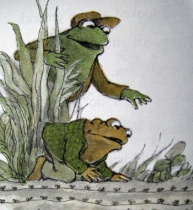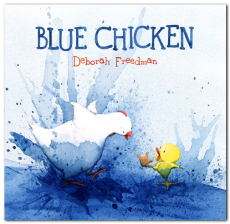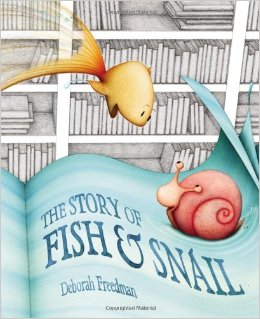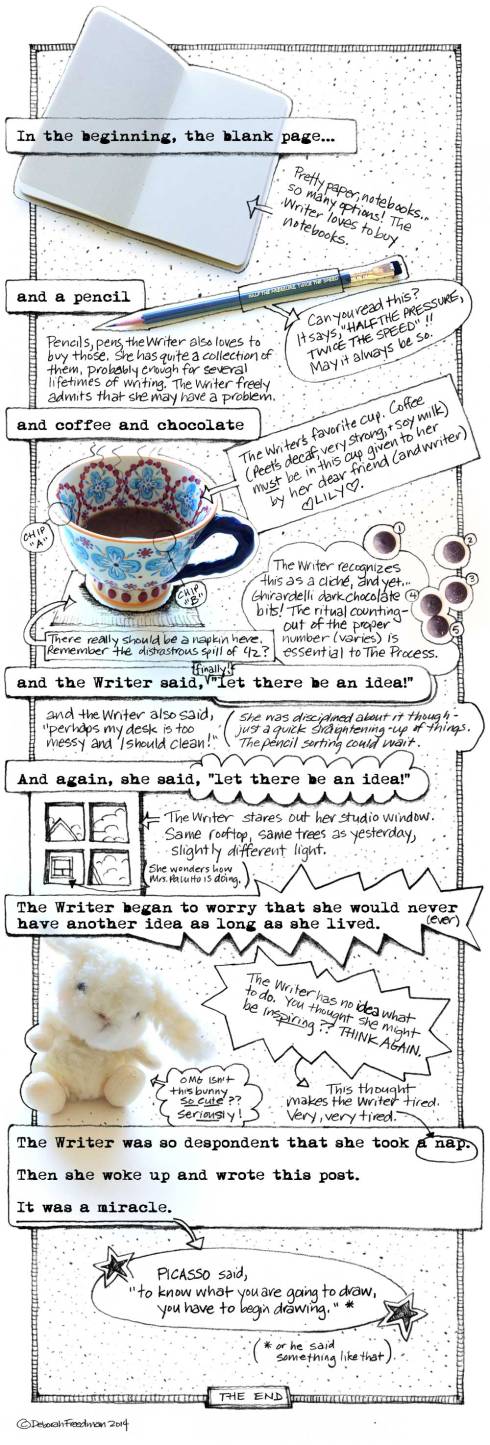I love finding picture books where the art and the writing work together just right, where the storyline is compelling and the illustrations are beautiful. Picture books like that are treasures, sure to inspire imagination, good feeling, greater understanding, and/or and dreams in young readers. I also love books that celebrate books and reading. All these picture books are ones I highly recommend.


Where’s Mommy?
Written by Beverly Donofrio, illustrated by Barbara McClintock
Published by: Schwartz & Wade Books/Random House
Published: March 11, 2014
ISBN: 978-0-375-84423-2
Recommended Age: 3-7 years (and up)
My Rating: 5 out of 5
Source: Review copy provided by the publisher in exchange for an honest review. My policy is only to review books that I love or enjoy.
As soon as I opened Where’s Mommy? I was drawn in by the warm, comforting images and delightful storyline. Every image has a yellow-orange background like sunlight that creates a warm happy, mood. There is SO much to look at in every illustration; so much detail to study and enjoy. And the writing is just enough to keep the reader interested and tell us what we need to know, but not too much that it becomes hard to sit through.
In Where’s Mommy? a little girl and a little mouse who are friends but can’t tell anyone about their friendship, both can’t find their mothers one night when they’re getting ready to bed. They look for their mothers, ask their family, and start getting worried–until they find their mothers together.
Where’s Mommy? is beautifully written and illustrated. We see two lives at once; the human girl’s and the mouse’s. Both the dual storyline and the dual illustrations parallel each other, and then converge in a satisfying story. I LOVE the parallel stories; in every page or spread, we see the human girl doing something–getting on her pajamas, brushing her teeth, looking in the kitchen for her mother–and then on the same spread (often below the human girl, or beside her), we see the mouse girl doing the exact same thing. The mouse family lives beneath the floor of the human family, and the way McClintock illustrates it, we see them not only doing the same kinds of things, we also see their rooms parallel each other, sharing not only the house but the page. Absolutely beautifully done.
McClintock’s detailed pen-and-ink, watercolor, and gouche illustrations are a delight to pore through. There are so many details in every drawing that make the illustrations feel cozy and just right, that tell us a happy family lives there–the toys lined up along the couch and shelves and scattered on the floor in the human image, with furniture and plants and books and paintings–and in the mouse family, so many creative, sweet details, like beds and seats made out of teacups, an iPod for a giant music system, clothespins making up part of a bed, Christmas lights and flashlights creating light, an empty plastic berry container as a countertop, and yes–tiny books and dishes and art. Everything is drawn beautifully, with great care and perspective. Warmth and friendliness emanates from every page.
Donofrio’s text is beautifully written. The story starts out with friendship, a secret, and the reason for the secret, with the two lives paralleling each other. It takes us on their paralleling journey, has the two characters bump into each other, and then at the climax gives us a delightful surprise. The text makes the girl and mouse’s lives closely parallel each other but still fit their own world; it’s satisfying to read. The story is fun and grabs the readers’ curiosity and interest–what will happen next?–and pulls us though to the surprise and the ending, where the lives parallel each other once more, ending with a question that the reader can answer.
I think this book will inspire friendship and hope, imagination, appreciating differences, and give readers a sense of comfort and belonging.
This is one book where the story text and the illustrations work so perfectly together that they just belong together; it’s as if they were created by the same person. Both are created so beautifully that the book is a joy to read; this book is one of my new favorites. I highly recommend it.


Journey
Written and Illustrated by Aaron Becker
Published by: Candlewick Press
Published: Aug 2013
ISBN: 978-0-7636-6053-6
Recommended Age: 4-8 (and up)
My Rating: 5 out of 5
Source: I purchased the book myself.
This wordless book is pure delight. It reminds me of both Harold And The Purple Crayon, and The Red Book by Barbara Lehman, where a lonely child finds a friend, happiness, and joy through creativity.
In Journey, a lonely young girl uses a red crayon to draw a door into another world–a world busting with color, beauty, and imaginative adventure. The nameless girl starts out in a gray-brown city, all alone and dark except for the pop of red from one toy she takes with her–her scooter, a kit, a ball. But when her family is too busy to play with her, her world turns completely gray-brown–until she spots the red crayon on her floor, and draws a door in the wall of her bedroom. She walks through the door–into a world lush with color, life, and imagination–a green forest with hanging lights. She goes on an adventure, using her magic red crayon to escape from danger, and to help rescue a beautiful purple bird that soldier captured. Together, the girl with her red crayon and the purple bird escape and travel through another door into another magical land–and then back to the city, where the bird is reunited with the boy who drew her, and the girl, the boy, and the bird become friends and go off on an adventure, riding a bike that both the girl and the boy created together.
Becker’s illustrations are powerful and a delight to page through. The initial bleakness of the girl’s world is shown dramatically through the gray-brown washes–lacking any other color except for the one bright red spot of hope through the girl’s toy when she approaches someone to play–and her crayon. Her red crayon becomes a focal point, both through the dramatic pop of color and through the magic of what it can do. Each object that the girl draws to help herself–a door, a boat, a hot-air balloon–are a red burst of color that stand out against the muted but lush colors of the magical worlds she travels through.
Becker’s illustrations are intricate and detailed, with so much to look at. I also like how the illustrations aren’t all the same size; in some, there are three small drawings on a white background per page, on some, they are full color but confined to one page, and on some the action takes place over an entire full spread of color. This helps keep the story appealing and engaging.
This in an enchanting, hopeful, imaginative book that reminds readers of the importance of friends, and the power of art and imagination to transport us out of unhappiness and make our lives happier and brighter. It’s also a 2014 Caldecott Honor Book, and rightly so. It is one of my absolute favorites. Highly recommended!


The Story of Fish and Snail
Written and illustrated by Deborah Freedman
Published by: Viking (Penguin Group)
Published: June 2013
ISBN: 978-0670784899
Recommended Age: 3-5 (and up)
My Rating: 5 out of 5
Source: I purchased the book myself.
Snail and fish are friends and live in a book together–called The Story of Fish and Snail. Snail waits each day for Fish to come home and tell her a story. But one day Fish says he found a new book, and wants to show it to Snail. Snail doesn’t want to go into other books, and they argue. Fish leaves, and Snail is all alone and sad. But then Snail sees Fish in an open book below theirs, and dives down into the new book. The two friends, together again, sail off to have an adventure in the new book.
I love the concept and playfulness of characters who live in the book we’re reading about, where the book becomes part of the art (kind of like Chester by Melanie Watt). There’s something so creative and appealing (especially to book lovers) about this. I love how the illustrations move from seeing Fish dive into the open pages of The Story of Fish and Snail as if the pages hold water and everything that we see within the pages for real, and not just illustrations, to closer and closer up views of the pages of the book until we don’t see the book any more, but just the book world (under water with stones and a tiny castle), getting closer and bigger views of the arguing friends so that they almost take up the page visually (and also with the emotion and fight), until Fish leaps right out of the book and we once again see that it’s a book spread open. I also love how the only color is inside the book pages; everything else (when we get a farther out view) is shades of gray in a library–because the rest of the setting isn’t important. What’s important are the worlds inside the books, and how they come alive. It’s also a great analogy of how books really do come alive for readers.
This is a beautifully drawn and written book. Visually, the characters are so expressive and full of emotion, and the book worlds are beautiful and magical–as if books physically hold what the words and pictures say they do. The illustrations are warm and comforting, showing two lives at once, and there is so much for readers to look at. The climax was strong, the writing was just right–not too much, just enough to tell the story, and perfectly matching the illustrations.
The Story of Fish and Snail encourages a love of books and imagination, and also reminds us that fear can hold us back, but sometimes we have to stretch ourselves a little if we want to keep up with our dearest friends. This is another new favorite of mine. Highly recommended!


The Noisy Paint Box: The Colors and Sounds of Kandinsky’s Abstract Art
Written by Barb Rosenstock, illustrated by Mary Grandpre
Published by: Knopf Books For Young Readers/Random House
Published: Feb 11, 2014
ISBN: 978-0307978486
Recommended Age: 4-8 years (and up)
My Rating: 5 out of 5
Source: Review copy provided by the publisher in exchange for an honest review. My policy is only to review books that I love or enjoy.
In The Noisy Paint Box, Vasya Kandinsky was taught to be a proper Russian boy, with manners and rules and things to practice, and he lived up to that–until his aunt gave him a wooden paint box. Vasya heard the colors make noise when no one else could. And so he painted the sound of the colors. But his family didn’t understand and wanted him to be like a normal Russian boy–so for a long time he held himself in and did what was expected of him–until finally he couldn’t ignore the singing of color. Finally, he went back to painting, painting what he heard and saw and felt from color. And when he did that, he created a new form of art–abstract art. Art that was meant to make people feel.
Text and illustrations work really well together. I love that Barb Rosenstock tells us about Vasya Kandinsky–a famous painter–and tells it as a story that comes alive, a story that we can almost touch and hear. Her word choices feel like poetry: “He spun a bright lemon circle onto the canvas. It clinked like the highest notes on the keyboard,” and make us feel it, see it, almost hear it. Her beautiful writing will grab the reader’s interest and keep them wanting to know about the little boy who people tried to force to conform, who grew into his own creativity and art. I also like that there’s an author’s note at the end of the book that included detailed information about Vasya and shows some of his actual paintings.
Mary Grandpre’s illustrations (the illustrator of the Harry Potter books) make the story come alive even more. The characters are expressive, and the illustrations are so creative, with words and images and bright swirls of color incorporated right into the illustrations themselves. For instance, when the grown-ups talk at dinner, not only do we see strips of cut-up words coming from their mouths, but we also see their heads and bodies full of words. And once Vasya discovers paint, we see the paint colors swirling up off the page with words, symbols, and bright color to show the sounds he hears. Grandpre’s style is unique, visually compelling, and full of movement, bright color, and energy.
The Noisy Paint Box reminds readers that creativity is powerful, that it’s important to be true to ourselves no matter what anyone else says, and that if we have a dream, we should follow it. This book will encourage creativity and art, and creative, out-of-the-box thinking. Highly recommended!


Books Always Everywhere
Written by Jane Blatt, illustrated by Sarah Massini
Published by: Random House For Young Readers
Published: May 27, 2014
ISBN: 978-0385375061
Recommended Age: 3-7 years (and up)
My Rating: 4 out of 5
Source: Review copy provided by the publisher in exchange for an honest review. My policy is only to review books that I love or enjoy.
Books Always Everywhere is another book that celebrates books and reading, and so encourages the reader to enjoy books. I think this is especially important when young children are increasingly introduced to technology, television, and video games. Books teach us about the world and encourage empathy and help us understand the world in a different way than even movies can–by putting us inside the characters through our own imaginations. So I love this book about books for very young readers. I could see it being made as a board book. (The copy I have is a regular picture book.)
Jane Blatt’s rhyming text is very simple, aimed at young children learning to read: “Book big/Book small/Book wide/Book tall.” Words also appear on the books the toddlers read–some on the inside pages, and some on the covers or spines. The text flows easily and quickly, and the rhymes are just right–something I’m particular about when reading, because when the rhyming is off it can take the reader out of the story. But here it works perfectly, and gives the readers a sense of books being everywhere.
Sarah Massini’s illustrations are sweet, simple, and fun–a good match for the text and the age. They they remind me of Helen Oxenbury’s style. The baby and toddler characters are adorable in their various onsies and PJs and little outfits, with simple, sweet faces, just dots for eyes, and little curves for noses and mouths–and babies and young readers are sure to enjoy seeing other little people in the pages. I also like that various ethnicity are shown in the characters. But my favorite part are the books within the pages of this book–three-dimensional books that are much bigger than they’d be in real life–big enough to climb on–and smaller books that the toddlers hold, read, and sit on. I love, too, how the books are not just books to read, but also books to play with–to sit on, to create a fort with, a hat, a tower–prompted by Blatt’s text–just like books are used in real life with young kids, and also books are enjoyed everywhere, on swings, in bed, at the beach.
I think Massini must have had fun creating book titles and text that fit what the characters were doing in each illustration. Young readers will enjoy hearing the silly, funny titles: “Trees Are the Bee’s Knees,” “Ooops-a-daisy!” when a baby drops a book, while other titles are of classic tales.
Books Always Everywhere is a sweet, simple book about enjoying books everywhere. It will encourage a love of books and reading, and shows other young children reading, too. I think kids need to see reading modeled to help them read more, and this book could encourage that. Highly recommended!
 “NOW SEEDS, START GROWING!”
“NOW SEEDS, START GROWING!”
Frog came running up the path.
“What is all this noise?” he asked.
“My seeds will not grow,” said Toad.
“You are shouting too much,” said Frog. “These poor seeds are afraid to grow.”
“These poor seeds are afraid to grow.” Wait… seeds can be afraid to grow? I didn’t know that. I wonder if that is my problem. Are you talking to me too, Frog? Can stories be afraid to grow, too?
Maybe I am shouting too much: Now ideas, start GROWING—what will the critique buddies think? what will mr. agent, ms. editor think? what will bookstores, kirkus, random readers on goodreads think? what if I never, never have a good idea again? OMG! that really could happen! please, please, ideas—GROW, GROW, GROW!
Help—TOAD—I can’t stop the shouting! Where are you? What would YOU do?
Toad read a long story to his seeds.
All the next day Toad sang songs to his seeds.
And all the next day Toad read poems to his seeds.
And all the next day Toad played music for his seeds.
Then Toad felt very tired, and he fell asleep.
Oh! These all sound like easy things to do… thank you Toad, I will do them! I will read stories and poems and play music. And then maybe I will also look at art, and walk in the woods and stop on the footbridge to play Poohsticks. And then plant things, bake things, make things… make anything but books.

And then finally, I will lie on the couch and stare out the window, until… until there is no more shouting and it is quiet… except for some birds (what’s the gossip today, guys?), and a couple of squirrels (hey, what is the problem out there? stop bickering!), and my cat, Milo, snoring.
I will try all of these things because I have read, and read over many times again, FROG AND TOAD TOGETHER by Arnold Lobel, so I know that in “The Garden”—spoiler alert!!!—once Toad stops shouting, his seeds really do grow in the end. Hopefully, if I’m quiet and patient too, my ideas will stop being afraid to sprout, and if I have a good one—hooray!!—I will jot or sketch it down right away. And then, at last, I can reward myself by taking a lesson from the next chapter of Frog and Toad: “Cookies”.
 Toad baked some cookies.
Toad baked some cookies.
“These cookies smell very good,” said Toad.
He ate one.
“And they taste even better…”
Hey, did you have an idea today? Well then, have a cookie! And by the way, what do you do, to coax your ideas to grow?
Once-upon-a-time, Deborah Freedman was an architect, but now she prefers to build worlds in books. She is the author and illustrator of SCRIBBLE and BLUE CHICKEN, and THE STORY OF FISH AND SNAIL, to be published in June 2013, by Viking. Follow her adventures at Writes With Pictures or on Facebook and Twitter @DeborahFreedman.
 And lucky you, it’s time to win something AGAIN! Deborah is giving away a signed copy of her book BLUE CHICKEN!
And lucky you, it’s time to win something AGAIN! Deborah is giving away a signed copy of her book BLUE CHICKEN!
Just comment to be entered (one comment per person).
A winner will be randomly selected in one week.
Good luck!















 “NOW SEEDS, START GROWING!”
“NOW SEEDS, START GROWING!”
 Toad baked some cookies.
Toad baked some cookies.
Yes… you just have to begin! And I too have a special mug that I prefer to use, made for me by a dear friend!
I SO appreciate this post…I have several cups, two hold a pint of coffee on some mornings, some evenings “an adult beverage.” My M&M’s are separated by color, which ever number is lowest is consumed first…I write snippets all the time – that napkin under your cup wouldn’t stand a chance of escaping unsullied!!:) I pray for an illustrator because the whale I just doodled out looks like a angry deformed turtle with a huge fluke tail…sigh, more coffee please! Thanks Deborah for this wonderful post!
Staring at the blank page always makes me worry about not getting anywhere with my writing. My trick is to go back a page or two and start editing. I guess we all have our rituals!
über-creative post, thank you!
Loved the honest and humorous way you showed the process. A nice way to start off another day of PiBoIdMo.
Fun post. Thank you Deborah! You made my day!
So THAT’s why I have mugsful and shoeboxes full of pencils…and a few pens! Thanks for validating my collection!
This was a fun postto read first thing Saturday morning. Today I won’t feel so badly about pushing aside the random slips of paper with disconnected notes that are zig-zagged atop my desk beside the computer. Maybe I should draw a picture of this unique arrangement before I begin writing…but wait! I HAVE begun writing… right here. Thanks for the inspiration, Deborah!
Great graphic! And I love “Fish and Snail”. Thanks for the post.
Now that’s a list of interesting words. Thanks Betty
I love this. I can definitely relate. :)
Love the Picasso…um…almost quote?
Ha! Brilliant! I love to buy notebooks and take naps too. :)
True to my nature.
Enjoyed this post- Great way to start the day! Thank you!
Beautiful. Love your books too.